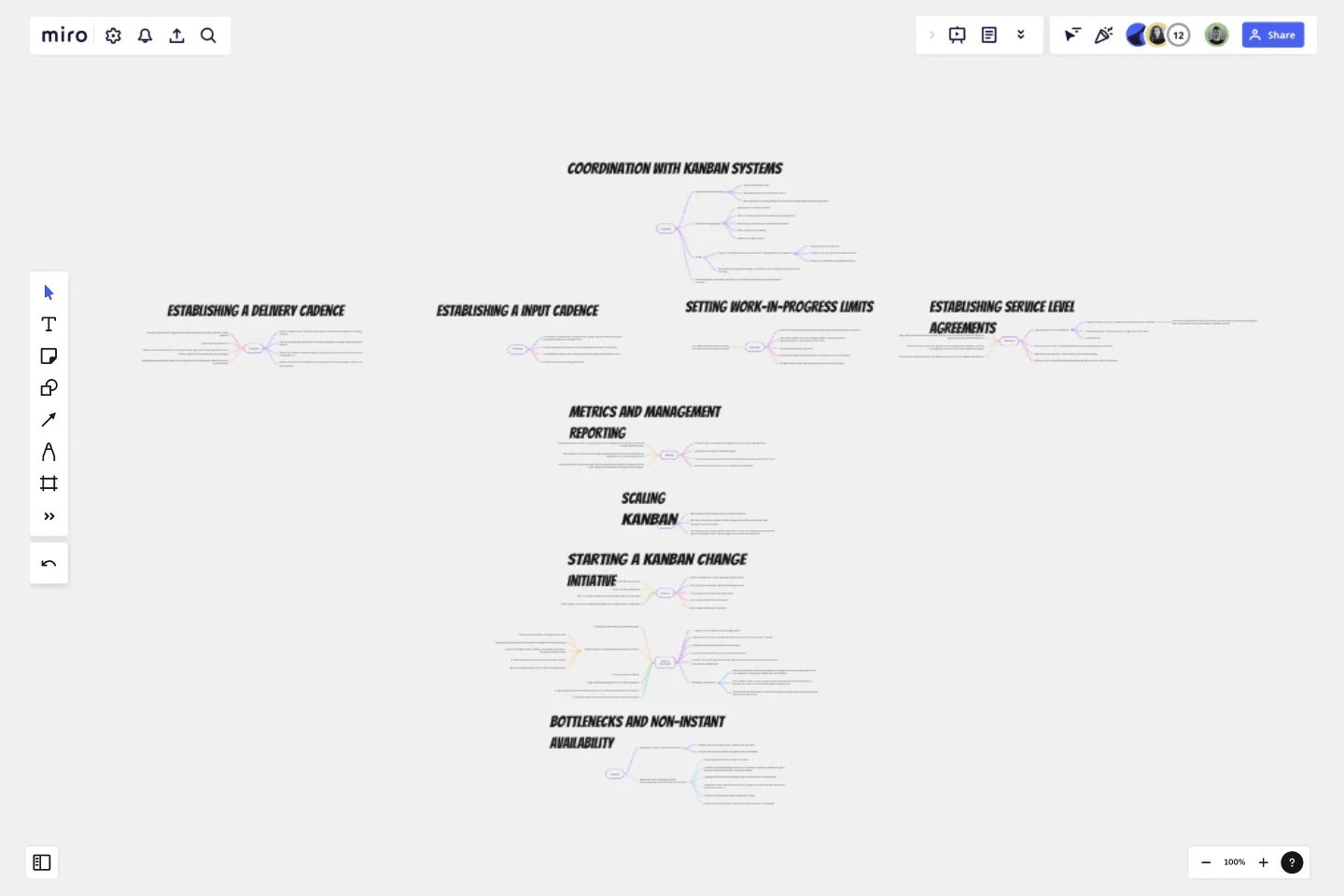Kanban Successful Evolutionary Change
Implement Kanban methodology with the Successful Evolutionary Change template. Foster improvement and adaptability by visualizing workflows.
These learnings have been taken from David Anderson's book on Kanban Successful Evolutionary Change for Your Tech Business, which I've summarised in this Miro mindmap.
The board is structured as follows:
What is Kanban?
Kanban in Software Development
Implementing Kanban
Coordination with Kanban Systems
Starting a Kanban Change Initiative
Tips for Getting Started
Delivery Frameworks in Practice at Boohoo
Conclusions
Read each of the mindmaps clockwise to delve into mine and the writer's thoughts.
This template was created by Matthew Binder.
Get started with this template right now.
Growth Experiments Template
Works best for:
Leadership, Desk Research, Strategic Planning
Many ambitious companies are eying the future and aiming to grow. But growth decisions can be leaps of faith that are risky and costly. That’s why growth experiments make so much sense. They offer a systematic six-step method that reveals which strategies are most effective, how they’ll affect your revenue, and how they compare to your past approaches. By helping you test out your strategies for scaling your business before you fully commit, growth experiments can save you serious time, resources, and money.
121 Kanban
Works best for:
Kanban Boards, Agile Methodology, Agile Workflows
121 Kanban template streamlines task management by providing a structured framework for prioritization and execution. It encourages a focused approach to task completion by limiting work in progress (WIP) and promoting collaboration between team members. With clear visualization of tasks and progress, teams can maintain workflow balance and deliver high-quality results efficiently.
Funding Tracker Template
Works best for:
Kanban Boards, Operations
For many organizations, especially non-profits, funding is their lifeblood—and meeting fundraising goals is a crucial part of carrying out their mission. A funding tracker gives them a powerful, easy-to-use tool for measuring their progress and staying on course. And beyond helping you visualize milestones, this template will give you an effective way to inspire the public to donate, and help you keep track of those donors. It’s especially useful when you have multiple donations coming from a variety of sources.
To-do List Template
Works best for:
Project Management, Education, Decision Making
A to-do list helps teams manage, organize, and prioritize their upcoming tasks. As a result, they can improve time management and streamline work operations. Using Miro’s to-do list template, teams create interactive, collaborative, and user-friendly task lists.
The Agile Manifesto - Pocket Sized Principles
Works best for:
Kanban Boards, Agile Methodology, Agile Wokflows
The Agile Manifesto - Pocket Sized Principles template distills the core principles of agile methodology into a concise and actionable format. By providing a visual reference, this template reinforces agile values and principles, guiding teams towards collaborative, adaptive, and customer-centric practices. This template serves as a reminder of agile principles and encourages teams to embody these principles in their daily work.
Goal Tracker Template for Small Businesses
Works best for:
Kanban Boards, Agile Methodology, Agile Workflows
Goal Tracker Template for Small Businesses empowers small businesses to set and track their goals effectively. By visualizing goals, milestones, and progress, this template fosters accountability and motivation. With features tailored to small business needs, such as revenue tracking and customer acquisition goals, teams can prioritize initiatives and make data-driven decisions to drive growth and success.
